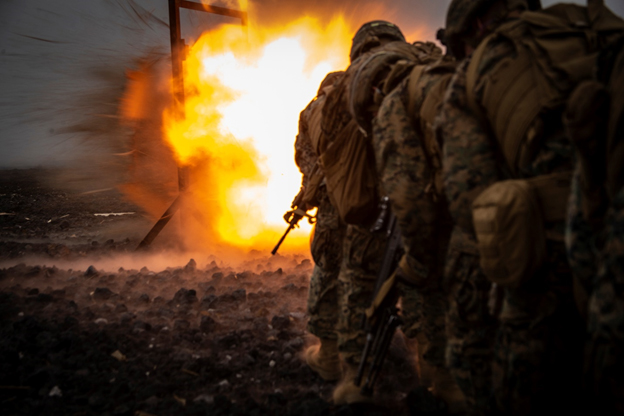Research suggests that military blast exposure-induced hippocampal synaptopathy elevates the risk of developing persistent neurological symptoms.
In the 21st century, exposure to military or improvised blasts is a common cause of life-altering injury in Service members. A growing body of research has demonstrated the negative effects of exposures to low-level blasts through obstacle breaching, shoulder-fired weapons, and heavy weapons training. Although blast exposure may not result in immediately discernable injuries, there is an increasing incidence of Service members describing delayed, but persistent neurological symptoms (e.g., depression, headaches, anxiety, irritability, sleep disturbances, blurred vision, and memory problems) following blast exposures; unfortunately, neuroimaging techniques are not yet sensitive enough to detect the subtle structural changes associated with these symptoms.
In the current study1, researchers investigated the hypothesis that, when Service members are exposed to rapid shockwaves generated by military-grade explosives, the hippocampal networks involved in emotion-laden memories and social behavior experience disruptions and neuronal changes commonly found in cognitive disorders such as dementia. Using a rat model, the researchers subjected hippocampal explants to detonations of highly-controlled spherical charges ex vivo. Although no structural modifications were observed in the brain tissue as a result of the induced blasts, significant biochemical changes occurred in response to the blasts when measured 24 hours after the initial exposure; these changes included reduced levels of several biomarkers such as synaptophysin, GluA1, synapsin IIb, and neural cell adhesion molecule, which shared several features, but not all, with mild cognitive impairment (MCI) and Alzheimer-type pathogenesis.
The research findings1 indicate the possible mechanism for injury that may underlie the delayed symptoms that military personnel experience as the result of blast exposure. Service members exposed to blasts during training and operations are at an elevated risk for developing persistent neurological symptoms. The researchers stressed the importance of leveraging these findings to identify biomarkers for the early diagnosis of MCI to give military personnel the information needed to prevent or delay progression of these symptoms. The early detection of these changes is critical for the development of cognitive health and therapeutic monitoring that will improve the resilience and long-term health of Service members.

1 Almeida MF, Piehler T, Carstens KE, Zhao M, Samadi M, Dudek SM, Norton CJ, Parisian CM, Farizatto KLG, and Bahr BA (2021) Distinct and dementia-related synaptopathy in the hippocampus after military blast exposures. Brain Pathology 31:e12936.
This study was supported by the National Institutes of Health, Grant/Award Number: 5R25GM077634; Intramural Research Program of the National Institute of Environmental Health Sciences, National Institutes of Health, Grant/Award Number: Z01 ES100221 (SMD); and U.S. Army Research Laboratory and the U.S. Army Research Office, Grant/Award Number: W911NF-14- 2- 0087 (BAB).
Your 15 minute session will timeout in approximately 10 minutes.
If you're in the middle of entering information, please close this warning and save your progress (if possible) or finish up your task.
If your session fully times out, you will lose any un-saved work.
Your current Blast Injury Research Program session has expired.
Your next click will take you away from the private area, and you will lose any work you have in-progress.
Please enter your email address, and try again.